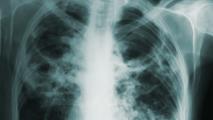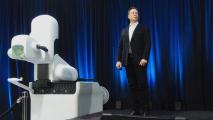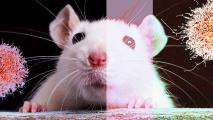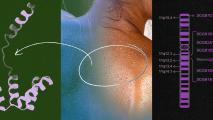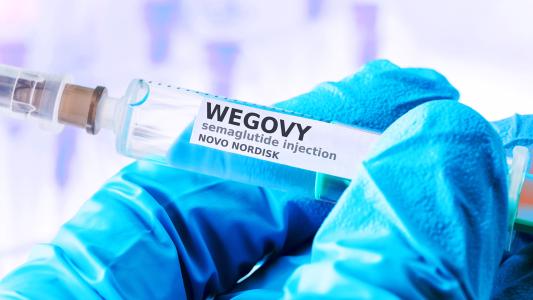Last century, we extended our lives. This century, we need to shorten our deaths.
Since the dawn of the 20th century, humanity has experienced a rise in life expectancy unparalleled over our species’ 300,000-year history. In 1900, a newborn could expect to live, on average, 32 years. By 2021, he or she had 71 years ahead of them.
Take a brief moment to consider this astonishing advance. For all but the most minute fraction of humankind’s existence, an individual persisted just a few decades on average. In the blink of an evolutionary eye, our lives have more than doubled in duration.
This is an undeniably good thing, but it has been accompanied by an unfortunate side effect. Longer life extends the time we spend in good health, but also the time we spend in poor health.
Reducing the gap between lifespan and healthspan is of paramount importance.
Scientists commonly utilize two metrics to measure longevity: lifespan and healthspan. Lifespan is the number of years lived by an individual. Healthspan is the number of years lived in good health — feeling well and mostly free of disease. Since it’s essentially impossible to always be healthy, a gap exists between these two metrics. Right now, it’s larger than ever. Globally, the divide is 9.2 years. In the United States, it’s 12.7. This is the amount of time that people live in poor health — perhaps in pain, unable to move with ease, and reliant on regular medication — and it is almost entirely concentrated at the end of individuals’ lives.
“Overall, the argument could be made that we are postponing death, extending morbidity at the end,” Gordon Lithgow, Vice President of Academic Affairs and leader of the Lithgow Lab at the Buck Institute of Aging, told Freethink.
With population growth slowing across much of the world, resulting in an increasingly aged populace, reducing the gap between lifespan and healthspan is of paramount importance. In 2020, only one out of 201 countries had more than one-fifth of its population aged 70 or older. By 2100, 124 countries will be in this situation. If a sizable proportion of older adults are in poor health, caretakers and resources to support them will be strained.
If the cost of healthcare in the US continues to grow at this pace, it could account for nearly a third of the US economy by 2050.
The United States will soon reach that elderly threshold. The Urban Institute projects that by 2040, 20.4 percent of the population will be 65 or older, up from 12.4 percent in 2000. At the same time, there will be far fewer workers to pay into the programs that support older adults: Medicare and Social Security. In 2010, there were 3.2 workers to support every Social Security beneficiary. In 2040, there will only be 2.1. For these programs, and individuals, it’s imperative that the elderly stay healthy in their twilight years. Currently, they are not.
Ara Warkes Darzi, Baron Darzi of Denham, the Paul Hamlyn Chair of Surgery and co-director of the Institute of Global Health Innovation at Imperial College London, described the scale of the potential problem at the Targeting Healthy Longevity 2023 Global Conference:
“When my colleagues… did some projections, they found if healthcare cost in the U.S. alone grows at the same pace as it has the next 30 years as they have as the past 30 years, then healthcare will account for 32% of the US economy by 2050.”
Lithgow similarly warned of potential economic and healthcare disaster if the lifespan-healthspan gap isn’t closed as populations age. Comparing the problem to global warming, he said that the issue has been allowed to fester. Stakeholders insist that science and technology will solve the problem, but they haven’t actually invested in solutions.
The primary reason for the lifespan-healthspan gap is the rise of chronic disease fueled by unhealthy lifestyle choices.
Governments, organizations, and policymakers seem to finally be waking up to the scope of this looming conundrum. The United Nations (UN) declared 2021-2030, the “Decade of Healthy Ageing.” Through the World Health Organization, the UN is encouraging member states to develop age-friendly cities and communities, combat ageism, implement services to prevent, slow, or reverse declines in the elderly’s physical and mental capacities, and provide access to quality, long-term care. Think tanks like the Kitalys Institute and the Global Healthspan Policy Institute have sprung up to solely focus on erasing the lifespan-healthspan gap.
How did we come to live so many years in poor health — about a sixth of our lives, according to a recent analysis of the latest data from the IHME’s Global Burden of Disease study? It’s partly a side effect of medical advances. In 1915, almost everyone died from infectious diseases. With many of these — polio, tuberculosis, smallpox, etc. — now thwarted by vaccines, antibiotics, and sanitation, we’re able to grow older, where our bodies are more vulnerable to frailty and disability. Medical intervention can also now save us from conditions that meant certain death in the past — such as serious injury, heart attack, or cancer. However, survivors are often hobbled and unhealthy, unable to maintain their previous lifestyles.
But the primary reason for the lifespan-healthspan gap is the rise of chronic disease fueled by unhealthy lifestyle choices. Cardiovascular disease, obesity, diabetes, and chronic respiratory conditions account for 80% of chronic disease-related mortality. And long before they result in death, they seriously erode sufferers’ quality of life, sap productivity, and eat up healthcare resources.
“Addressing modifiable risk factors, namely excess weight, physical inactivity, smoking, and poor diet, would prevent 80% of deaths from non-communicable diseases, corresponding to 57% of all deaths,” a team of researchers at the Mayo Clinic wrote in a 2021 paper published in the Nature journal Regenerative Medicine.
Solutions that seem like sci-fi now could exist in the near future to help healthspan catch up to lifespan.
How can we close the lifespan-healthspan gap? Star Trek: The Next Generation presented a cold, cudgel-like solution in the memorable episode “Half a Life.” In it, the crew of the Enterprise encounters a civilization in which everyone who reaches age sixty voluntarily submits to the “Resolution”, a ritual act of euthanasia. The resolution is seen as a noble sacrifice, meant to prevent the elderly from burdening younger generations and thus stifling societal innovation and technological advancement.
While interesting fodder in science fiction, this ethically dubious idea is a non-starter in the real world. But solutions that seem like sci-fi now could exist in the near future to help healthspan catch up to lifespan.
One of these is senolytics: using drugs to selectively eliminate older, malfunctioning, “senescent” cells. As we age, decrepit cells accrue and stick around, refusing to engage in programmed cell-death that helps rejuvenate our bodies. The resulting deleterious effects of senescent cell build-up are myriad: muscles don’t move as efficiently, organs become dysfunctional, bones break more easily.
In mice, certain senolytics have been shown to boost lifespan by a third or more with limited side effects, while at the same time ameliorating at least 20 pathologies ranging from cognitive disorders and cancer to kidney disease and diabetes.
“We can extend lifespan with simple interventions [in animals].”
Gordon Lithgow
For Lithgow, seeing these incredible successes in lab animals like mice and roundworms, creatures which share many biological mechanisms with humans, is like staring at the fountain of youth but not being able to drink from it.
“We can extend lifespan with simple interventions, and we reduce the amount of time they are sick at the end of life,” he said.
He remains optimistic that similar results are possible in humans: “It’s not like we haven’t seen this. There are centenarians who are healthy and then they drop dead. They don’t have this protracted, lingering death.”
Using medicine to universalize this aging experience would be a breakthrough equivalent to antibiotics, Lithgow added.
Only a few, small trials involving senolytics have been conducted in humans, but they’ve had promising results. Many more are presently underway.
It’s possible that anti-aging cocktails combining these drugs could be prescribed to older adults.
Senolytics constitute a futuristic “Hail Mary” medical solution, but there are already compounds available that are being used, or could be repurposed, to extend healthspan. Heart disease-preventing statins are majorly beneficial, as are the new class of diabetes and weight loss drugs like Zepbound and Wegovy.
Regular, low-dose administration of the drug rapamycin, currently used to prevent organ transplant rejection, has been shown to extend lifespan in some animals and improve some outcomes in humans’ immune, cardiovascular, and integumentary (skin) systems. A large, placebo-controlled trial in dogs is underway now to test rapamycin’s longevity-promoting potential.
Bisphosphonates slow bone loss, but they also may boost cardiovascular health, reduce deaths from colon cancer, and lower the risk of developing pneumonia. It’s possible that anti-aging cocktails combining some of these drugs could be crafted and prescribed to older adults.
Fasting subjects grew younger in biological age by 2.5 years.
Ultimately, however, pharmaceutical-centered solutions are nowhere near as effective at boosting healthspan compared to practicing good old preventative medicine. This starts by following the well-known pillars of a healthy lifestyle: eating a varied diet, full of fiber-rich fruits and vegetables and low in added sugar and ultra-processed foods; drinking in moderation, abstaining from smoking, and engaging in regular exercise — at least 150 minutes of moderate to vigorous physical activity per week. Of these four foundations of good health, physical activity appears to be the most effective way to boost healthspan, but diet probably comes in a close second.
Valter Longo, the Edna Jones Professor in Gerontology and a Professor in Biological Science at the University of Southern California, and the Director of the USC Longevity Institute, has focused much of his extensive scholarship on dietary approaches to boost healthspan. In an email interview with Freethink, he said that a diet he designed that mimics fasting shows a lot of promise.
In various clinical trials conducted in humans, Longo and his colleagues have had subjects eat a diet of roughly 700 calories per day for five straight days, then eat normally for the rest of the month. While “fasting,” participants were fed pre-portioned plant-based soups, energy bars, energy drinks, chip snacks, and tea along with a supplement providing extra nutrition.
In a recently published trial, participants randomized to a fasting-mimicking diet followed the plan for four months. Afterwards, their health metrics were compared to participants eating a healthy Mediterranean diet. Fasting subjects grew younger in biological age by 2.5 years, while control subjects remained the same.
“What we have are sick care systems, not healthcare systems.”
Ara Warkes Darzi, Baron Darzi of Denham
Lifestyle choices are within individuals control, but healthcare providers also have a role to play when it comes to boosting healthspan. For one, they could devote more resources to preventing maladies that shorten healthspan rather than the ones that reduce lifespan. For example, cancers and heart disease cause the largest loss of life, and thus understandably attract the most funding and attention. Dementia and musculoskeletal problems drive outsized declines in healthspan, however, according to UK government data.
When addressing the Targeting Healthy Longevity 2023 Global Conference last fall, Darzi called for fundamentally restructuring healthcare systems, which are designed more for staving off death rather than boosting health:
“What we have are sick care systems, not healthcare systems. This observation isn’t meant to downplay their importance. Taking care of the sick is of a central importance for any civilized society. But sick care by its nature focuses on the already sick rather than on securing the health of those who are healthy. Indeed, many studies have found that less than five percent of health resources are dedicated to keeping people healthy… The mixing of the categories of health and sickness has some very significant consequences. Above all, it means the urgent need to take care of people who are sick tends to crowd out the important but less urgent need to help people to stay in good health.”
To preempt sickness, we need to realign investments and regulatory frameworks, he said:
“This is not just a scientific challenge. This is not just about a new discovery of a new therapeutics or a biomarker. This is about a whole transformation of the health system. And historically that is the most challenging.”
We’d love to hear from you! If you have a comment about this article or if you have a tip for a future Freethink story, please email us at [email protected].

